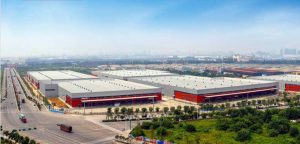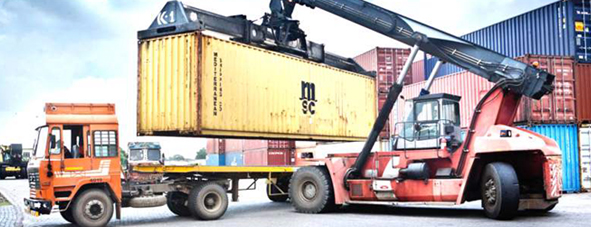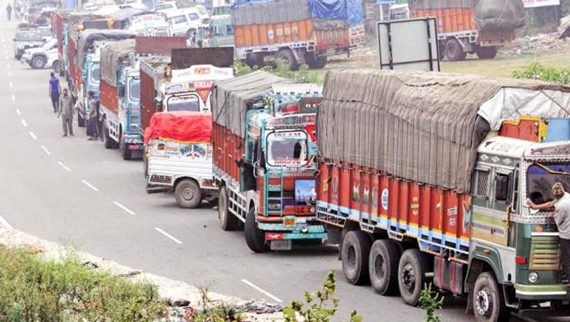India's struggle to make logistics industry level up with international standards
India’s ranking in the World Bank’s Logistics Performance Index (LPI) has taken a beating, having gone down from a ranking of 35 in 2016 to 44 in 2018. Prior, it did well improving its ranking to 35 from 54 in 2014. But severe bottlenecks in logistics continue and they need to be sorted out early, before seamless movement of goods happens across the country.
What India needs urgently is to come at par with international standards, reduce costs, join global value chains and increase trade. With 7,600 km of coast line, the ports and shipping industry can play a major role in improvement of the country’s logistics sector.
Fragmented logistics sector
India’s logistics sector is highly fragmented and the aim is to reduce the logistics cost from the present 14% of GDP to less than 10% by 2022. Its logistics industry is very complex with over 20 government agencies, 40 partnering government agencies (PGAs), 37 export promotion councils, 500 certifications, 10,000 commodities, and humongous market size.
It also involves 12 million employment base, 200 shipping agencies, 36 logistic services, 129 international container depots, 168 container freight stations, 50 IT ecosystems and banks and insurance agencies. Further, 81 authorities and 500 certificates are required for EXIM (export import).
The logistics sector has the capacity to generate massive employment in the country and it is expected that 28 million workers will be required in this sector in the near future in order to deliver competent and quality service.
Considering its importance in national economic development, a draft logistics policy was prepared in February by the Department of Logistics of the Ministry of Commerce & Industry.
The draft policy is now awaiting approval from the Union Cabinet. Talking about the draft logistics policy, the then Minister of Commerce, Suresh Prabhu said the cost of logistics in India is extremely high as compared to other countries.
The National Logistics Policy is expected to provide an overall vision and direction to integrated development of logistics in the country.
The vision of the policy is to ramp-up economic growth and trade competitiveness through an integrated, seamless, efficient, reliable and cost effective logistics network. Logistics is a very important component of ease of doing business as 80 % of ease in business relates to logistics.
Central portal to provide end-to-end logistics solutions
The Special Secretary (Logistics) N Sivasailam said the policy has envisaged setting up of a central portal which will provide end-to-end logistics solutions to companies.
The portal will be a single window market place to link all stakeholders. Also the Ministry has prepared a report—LEADS (Logistics Ease Across Different States) 2019—which suggests the states to improve logistics.
In the report, Gujarat has retained the top slot on the logistics index chart, an indicator of the efficiency of logistical services necessary for promoting exports and economic growth. The tech-driven portal is expected to create an eco-system for achieving highest efficiency in all aspects of India’s logistics.
It is to ensure ease of trading in the international and domestic markets. It links all the stakeholders of EXIM, domestic trade and movement and all trade activities on a single platform.
Logistics business worth US$160 billion
Sivasailam said the logistics business in the country is worth US$160 billion and is growing at 7% – 8 % every year. The key objectives of the policy are to reduce logistics cost from 14% to 10% of GDP, create additional 10-15 million jobs in the sector, become a single point for all logistics & trade facilitation and reduce losses in agriculture to less than 5%, by facilitating agri-logistics in the country.
In order to realize these objectives, 18 thrust areas have been detailed in the policy. These include optimizing modal mix in the country and development of logistics infrastructure, enhancing transport and rolling stock infrastructure, strengthening the warehousing and agri-logistics sector, streamlining key logistics processes – EXIM and inter-state movement, facilitating first mile and last mile connectivity, and easing logistics for MSME, e-commerce and all other key sectors in the economy.
High logistics cost
As mentioned earlier, the logistics cost in India is at a high of 13 to 14 % of GDP, compared to USA’s 9 to 10 %; Europe 10% and Japan 11%. In India, the sector is highly unorganized and has a skewed modal transportation mix, with 60% of freight moving on roads, which is significantly larger than in key developed economies.
Besides, different parts of the logistics value chain are currently being managed by many ministries including Road Transport and Highways, Shipping, Railways, Civil Aviation, Department of Posts, Commerce and Industry, Finance and Home Affairs. In addition, a large number of government agencies including Central Drug Standard Control Organization, Food Safety and Standards Authority of India, Plant and Animal Quarantine Certification Service provide relevant trade clearances and impact the value chain.
However, the policy is intended to resolve most of the issues and its vision is to drive economic growth and trade competitiveness of the country through a truly integrated, seamless, efficient, reliable and cost effective logistics network, leveraging best in class technology, processes and skilled manpower
The following are some of the key objectives for logistics in India, to be achieved in the next five years.
The first is to create a single point of reference for all logistics and trade facilitation matters in the country which will also function as a knowledge and information sharing platform. It plans to drive down logistics cost to 10 % in line with best-in-class global standards.
The policy intends to optimise the current modal mix (road-60%, rail-31%, water-9%) in line with international benchmarks (25-30% share of road, 50-55% share of railways, 20-25% share of waterways) and promote development of multi modal infrastructure.
 The objective is to improve first mile and last mile connectivity to expand market access of farmers, MSMEs and small businesses; enhancing efficiency across the logistics value chain through increased digitization and technology adoption; and ensuring standardization in logistics (warehousing, packaging, 3PL players, freight forwarders).
The objective is to improve first mile and last mile connectivity to expand market access of farmers, MSMEs and small businesses; enhancing efficiency across the logistics value chain through increased digitization and technology adoption; and ensuring standardization in logistics (warehousing, packaging, 3PL players, freight forwarders).
The policy also aims at creating a National Logistics e-marketplace as a one stop marketplace. It will involve implification of documentation for exports/imports and drive transparency through digitization of processes involving Customs, PGAs etc in regulatory, certification and compliance services. A data and analytics center to drive transparency and continuous monitoring of key logistics metrics is also planned.
It is envisaged that by doing so, the logistics sector can generate an additional 10-15 million jobs; improve India’s ranking in the Logistics Performance Index to between 25 to 30; strengthen the warehousing sector in India by improving the quality of storage infrastructure including specialized warehouses across the country; and reduce losses due to agri-wastage to less than 5% through effective agri-logistics involving access to cold chain, packaging and other post-harvest management techniques.
35 multimodal logistics parks contemplated
At present, there is a gap in the availability of multimodal logistics parks (MMLP) infrastructure for enabling seamless multimodal freight transfer, providing world-class storage and handling as well as delivering value added freight services.
The Government has identified 35 locations for the MMLPs, of which 24 are situated on the national corridors to be taken up for development in the Bharatmala Pariyojana Phase-I. Detailed project reports (DPRs) for seven locations – Nagpur, Mumbai, Bengaluru, Chennai, Surat, Sangrur and Jogighopa (Guwahati) have already commenced.
Even where ICDs’ and CFS have been created, there is potential to improve their utilization and performance. Also a Multimodal Logistics Park Authority (MMLPA) would be set up with representation from various central ministries (Rail, Road, Shipping, Civil Aviation, Customs etc.) as well as respective state governments. The Commerce Secretary will chair this Authority.
Focus will be given to perishable commodities given the specialized nature of requirements for their packaging, transportation and storage.
India is the second largest producer of fruits and vegetables in the world with fruit production of 92 MT and vegetable production of 178 MT. The wastage in fruits is around 25-30%, mainly driven by the limited availability of cold chain infrastructure at the right locations.
The Logistics Wing will work with the Ministry of Food Processing Industries, Ministry of Consumer Affairs, Food & Public Distribution and the Departments of Horticulture in respective states to identify key policy interventions and infrastructure enhancement to promote penetration of cold chain facilities and adoption of reefer trucks in strategic locations. Focus will also be to encourage start-ups working in the ‘farm to plate’ space.
 Trade to neighbouring countries mostly by road
Trade to neighbouring countries mostly by road
Of India’s total trade with its neighboring countries (Nepal, Bhutan, Bangladesh, Afghanistan, Pakistan and Myanmar), over 55% is through land based trading points. CBIC has designated 109 border trading locations as ‘Land Customs Stations’ (LCS), of which 85 are operational.
The adequacy of infrastructure at these LCSs, including warehousing, examination sheds, parking bays etc. as well as seamless movement and faster clearances by regulatory agencies like Customs, FSSAI, Plant and Animal Quarantine will be critical to increase the overall trade across India’s borders.
To achieve all these objectives, the policy has formulated a National Council for Logistics, to be chaired by the Prime Minister; Apex inter-ministerial Committee, chaired by the Minister of Commerce and Industry; India Logistics Forum chaired by the Commerce Secretary with representation from key industry/business stakeholders and academia; and an Empowered task force on logistics as a standing committee chaired by the head of the Logistics Wing. There is a lot happening on paper and it needs to be seen how it gets translated on ground.



